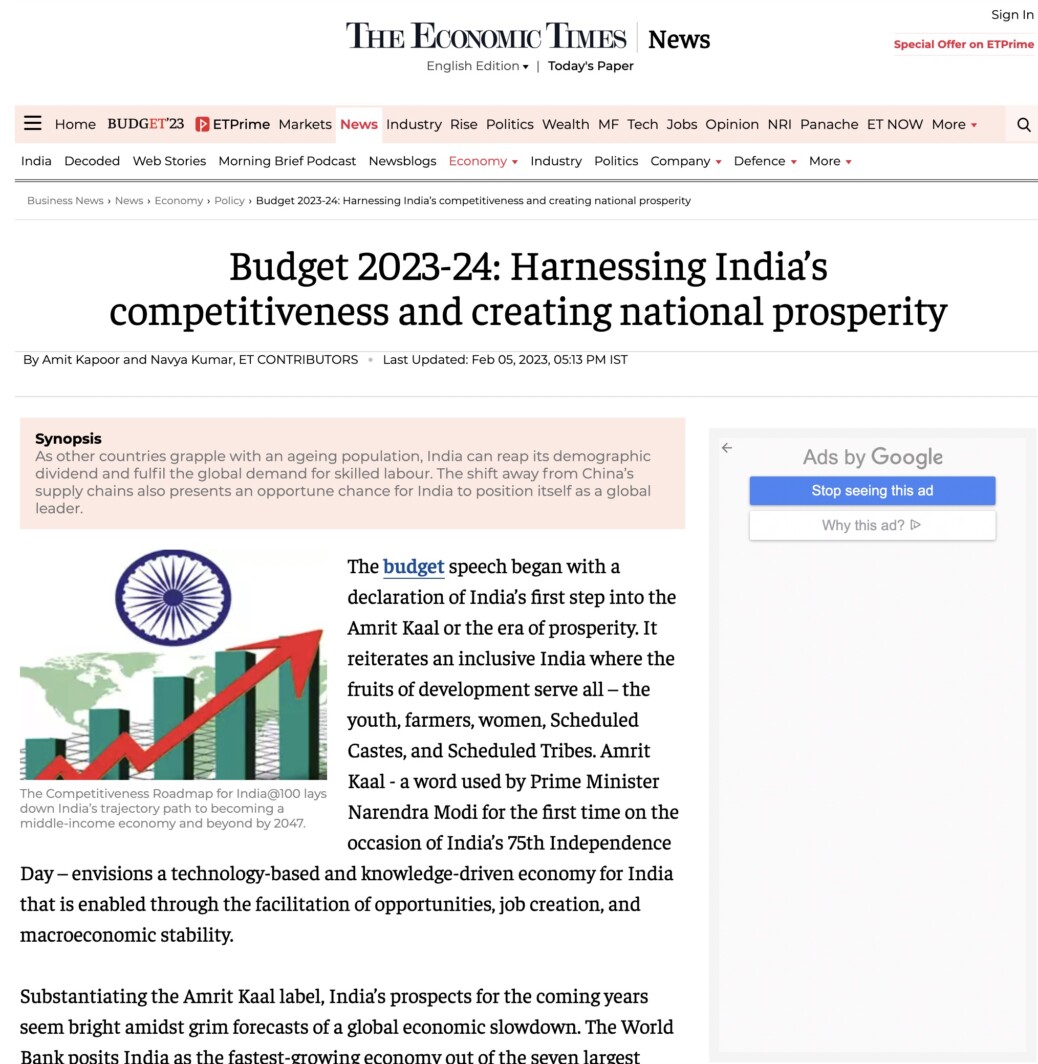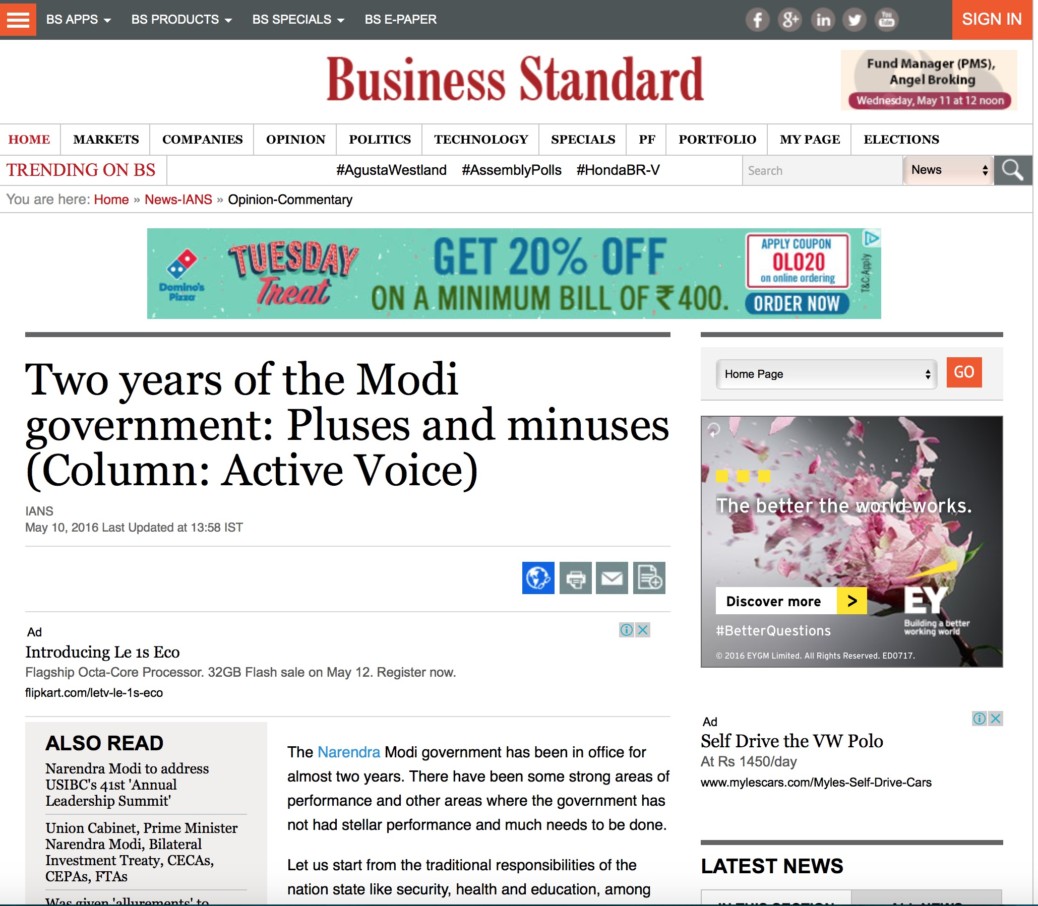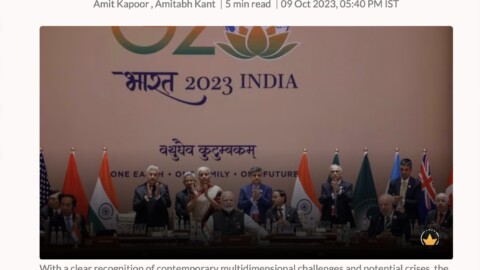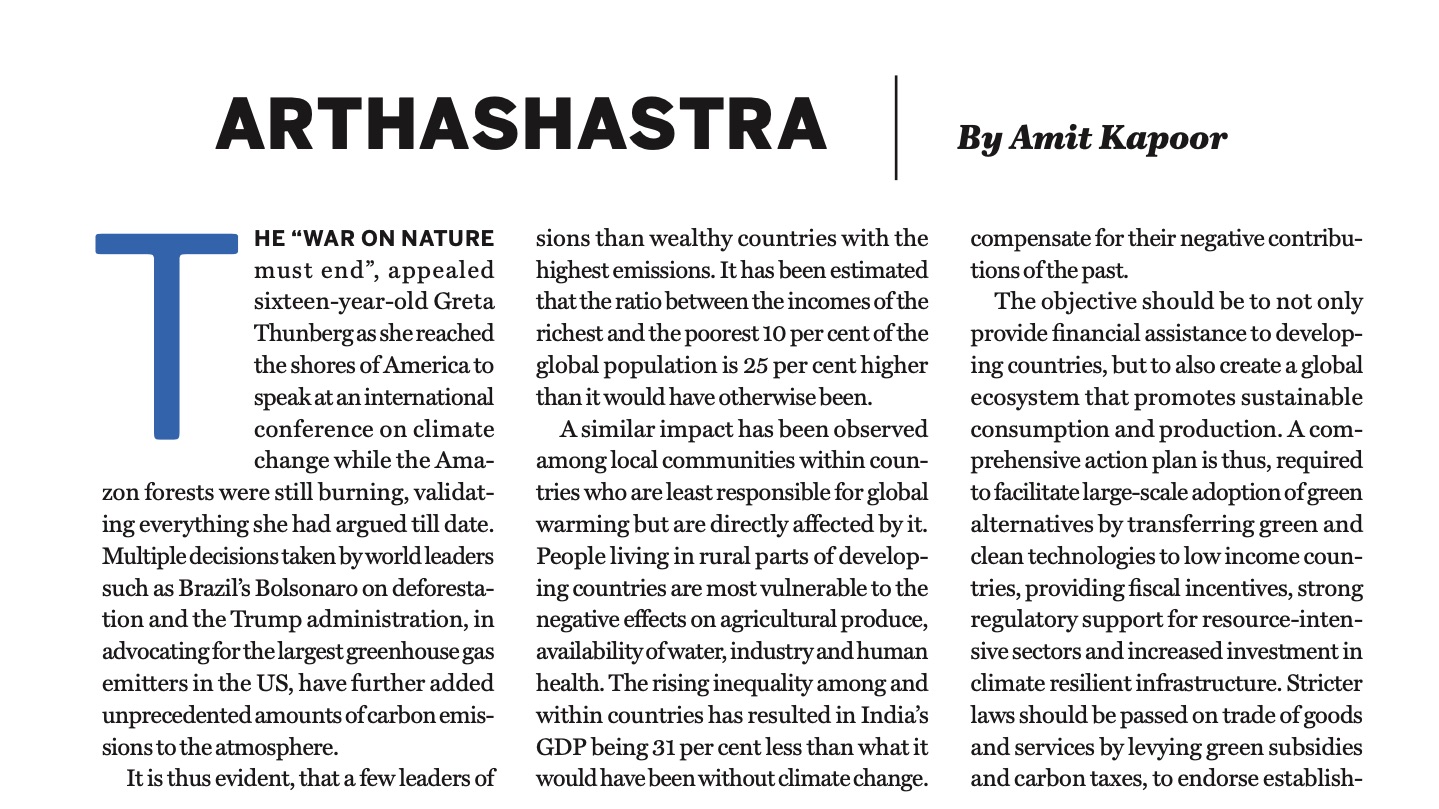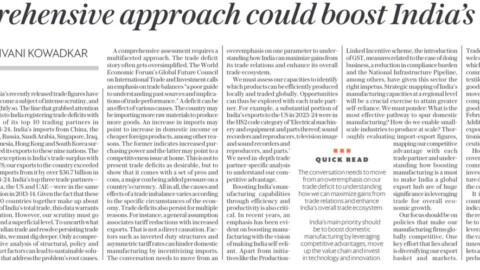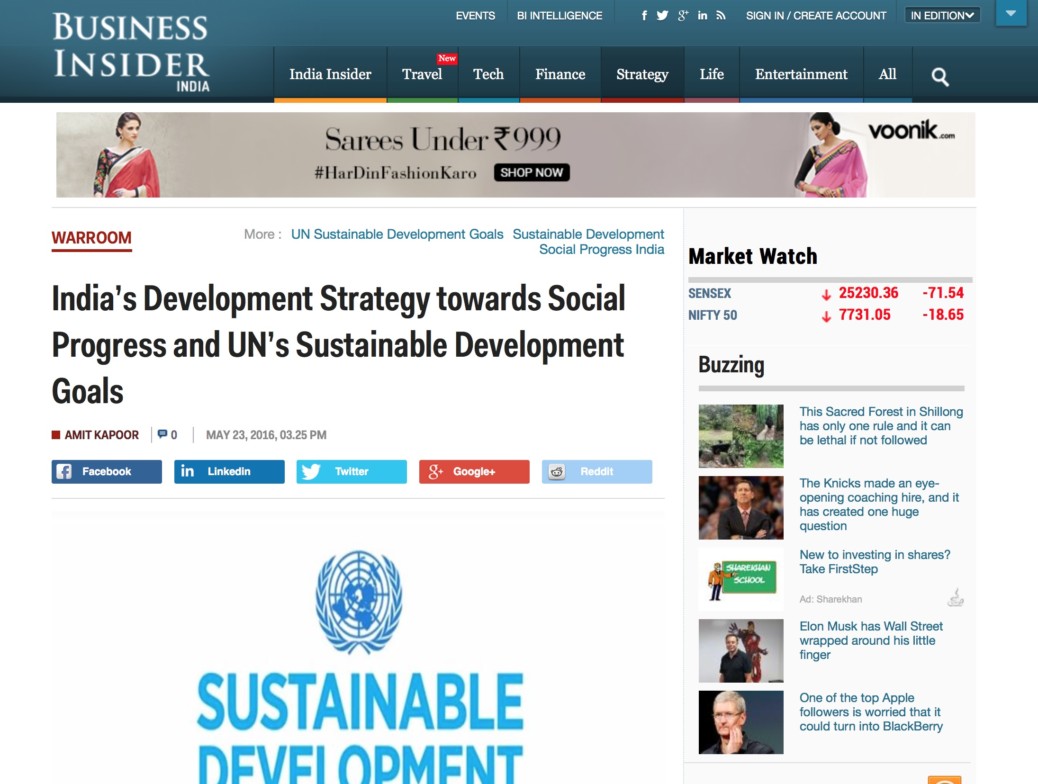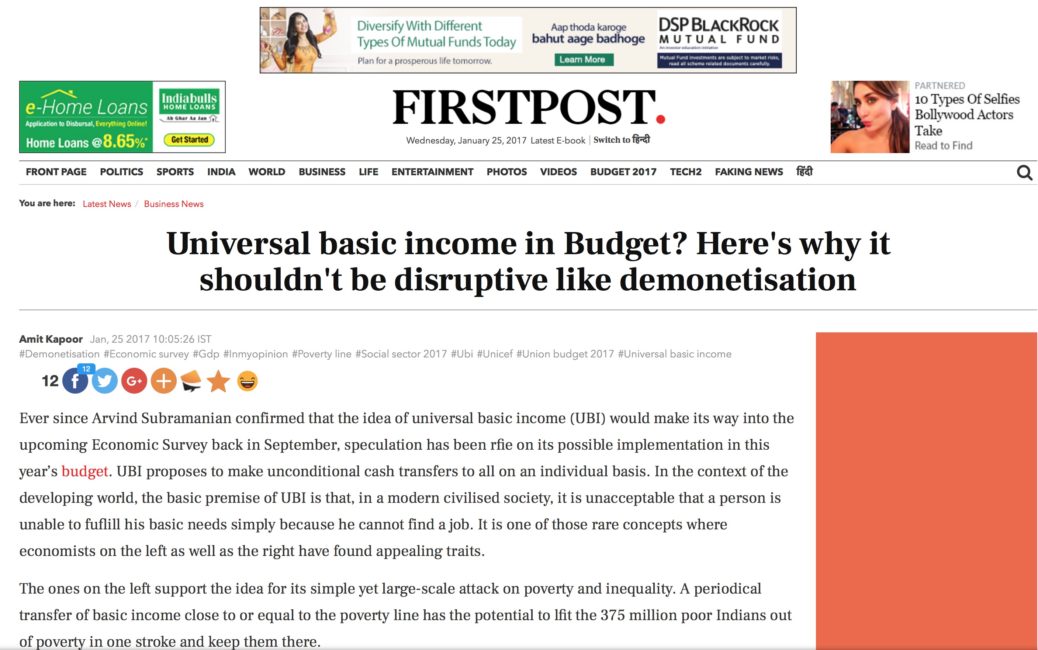Budget 2023-24: Harnessing India’s Competitiveness and Creating National Prosperity
The budget speech began with a declaration of India’s first step into the Amrit Kaal or the era of prosperity. It reiterates an inclusive India where the fruits of development serve all – the youth, farmers, women, Scheduled Castes, and Scheduled Tribes. Amrit Kaal – a word used by Prime Minister Narendra Modi for the first time on the occasion of India’s 75thIndependence Day – envisions a technology-based and knowledge-driven economy for India that is enabled through the facilitation of opportunities, job creation, and macroeconomic stability.
Substantiating the Amrit Kaal label, India’s prospects for the coming years seem bright amidst grim forecasts of a global economic slowdown. The World Bank posits India as the fastest-growing economy out of the seven largest emerging and developing economies (EMDEs). India’s growth prediction is 6.9 per cent for FY 2022/23 and 6.6 per cent for FY 2023/24. The Economic Survey predicts a baseline GDP growth of 6.5 per cent in real terms in FY24. Sixty-one countries are expected to experience a population decrease of 1 per cent or more between 2022 and 2050. As other countries grapple with an ageing population, India can reap its demographic dividend and fulfil the global demand for skilled labour. The shift away from China’s supply chains also presents an opportune chance for India to position itself as a global leader.
The last two years have been marked by uncertainty and volatility. It has exposed the chinks in our armour and forced a radical reimagination of our institutions. This period of unprecedented global collaboration has been accompanied by the emergence of a renewed global competitiveness ecosystem – the bid to increase productivity through effectively mobilising resources and creating value to drive long-term development. Conversely, increasing the competitiveness of nations benefits the global economy through knowledge and technology transfers, and the opportunity to capitalize on a country’s natural endowments and competitive advantage. The budget acts as a statement of intent that reveals a country’s priorities and underlying ideologies. Budget 2023-24 lays a heavy focus on capacity-building, invigorating domestic demand, and enabling an efficient business environment – all of which enhance national competitiveness.
The pandemic has instigated a worldwide incongruence between consumer demand and the existing production capacity. Expanding productivity and production is contingent on robust domestic consumption. Budget 2023-24 provides a strong boost to cash availability and disposable income that can drive demand. The personal income tax rebate limit being increased to ₹7 lakh allows students and recent graduates to have more room to save and spend as they begin their professional journey. A steep increase of 33 per cent to ₹10 lakh crores, a significant 3.3 per cent of GDP share, has been observed in the capital investment outlay. The centre’s direct capital investment efforts are complemented by grant-in-aid to states to incentivise investment in capital assets. This capital expenditure can create jobs, boost growth through a multiplier effect, crowd-in private investment, and create a market for subsidiary industries like steel.
Promoting innovation and tech transfer in the agricultural sector through the Agriculture Accelerator Fund showcases how digital technology can be leveraged to transform traditionally ‘low-output’ industries. The scheme can help shape the entrepreneurs of tomorrow and introduce a landscape of innovation in rural areas. Additionally, the increased credit target of ₹20 lakh crore with a focus on animal husbandry, dairy, and fisheries will help tackle disguised employment by creating work in allied segments. It effectively pivots around the slow sectoral change seen in agriculture-based economies moving towards the services sector.
At the firm level, the new budget has provisions to increase the competitiveness of our companies in the international and domestic markets, of which effective labour mobilisation and labour productivity forms a crucial part. For long, India’s manufacturing sector has dealt with the problem of a ‘missing middle’, where the large firms fail to generate adequate employment and a majority of persons remain trapped in low-production and low-income firms. The provision of a refund to failed MSMEs, enhancing the limits to allow more people to benefit from presumptive taxation, and the infusion of a ₹9,000 crore corpus for the credit guarantee scheme will hopefully increase the risk-taking appetite of the manufacturing sector and provide the necessary impetus for development.
Improved safety and legal measures and regulatory reforms greatly enhance the ease of doing business. The budget streamlines the notoriously bureaucratic compliance process by reducing 39,000 compliances and decriminalizing 3,400 legal provisions. Using PAN as a common business identifier and adopting a unified filling process also simplifies otherwise tedious undertakings and builds an enabling business environment. Technology and digital public infrastructure can facilitate access to distant markets at reduced transaction costs.
In the words of Michael E. Porter, encapsulating years of efforts on the competitiveness framework, “national prosperity is created, not inherited.” The Competitiveness Roadmap for India@100 lays down India’s trajectory path to becoming a middle-income economy and beyond by 2047. This year’s budget balances a tightrope act between exploiting India’s existing competitive advantages – such as skilling its massive youth population and promoting export competitiveness – and augmenting fiscal support for erstwhile underserved areas, such as green growth. Nonetheless, enhancing competitiveness entails making lives easier for all the heterogenous sections of Indian society. To that end, private and public players must cooperate to bring India’s ambitious goals to fruition, ensuring that the budget goes beyond being a mere statement of intent to one that invokes productive action.
The article was published with Economic Times on February 5, 2023.
